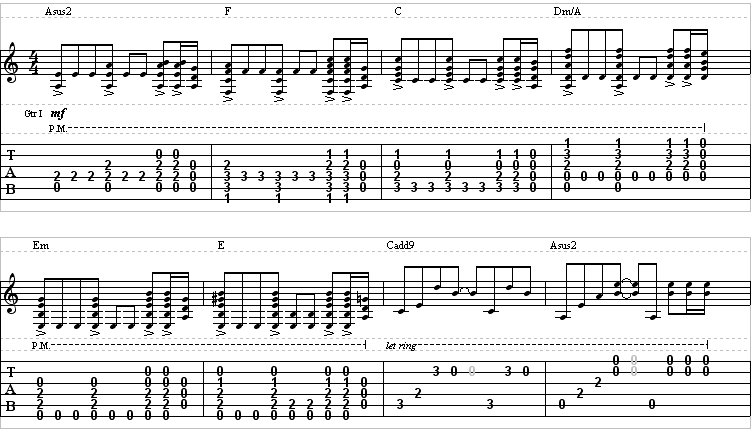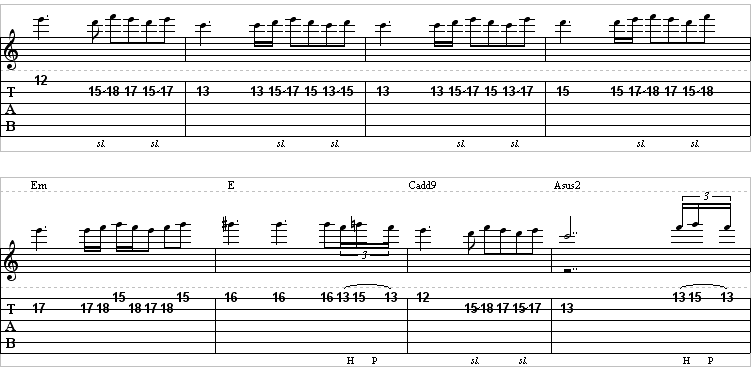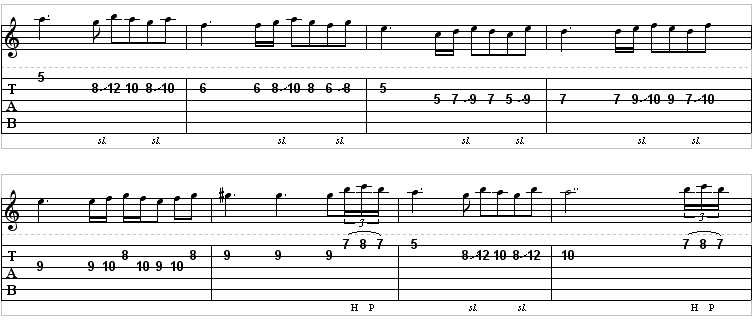Difficulty: Intermediate
Composer – Ween
Where to find this song – The Mollusk track # 12
Release Date – June 24, 1997
The Band:
Dean Ween – guitars, vocals, synthesizers, pianos, keyboards, drums, brass
instruments
Gene Ween – vocals, guitars, keyboards, drums, processors, synth drums, bass
The Bio:
Ween is the ultimate psychedelic goof of the alternative rock era, a multi-talented
and intoxicatingly odd partnership whose work traveled far beyond the realms
of parody and etherealism into the heart of surrealist ecstasy. Despite a mastery
for seemingly every mutation of the musical spectrum, the group refused to
play it straight; in essence, Ween were bratty anarchists, kicking dirt on
the pop friendly world around them with demented guffaw. Along with the occasional
frat-boy lapses into misogyny, racism, and homophobia, the band’s razor-sharp
musical stylings, they shaped their way into the underground scene, and captured
the minds of listeners who just wouldn’t settle for the simplicity that music
was becoming.
Verse and Interlude
Here’s what the pre-verse riff sounds like with guitar and bass:
Guitar 1

The first guitar part focuses mainly on rhythm, which is key to this song.
The chords are mostly simple, but what makes this song a bit more difficult
is the eccentricities within. You will be palm-muting the entire rhythm part
of the riff. Try to pay very close attention to the details of which strings
to play and the song will sound much more accurate.
Begin the first measure by playing an Asus2 chord. Do this by placing your
1st finger over the “D” string and the “G” string. Watch
closely on when to play the “G” string though, as you do not play
it the entire measure. For the second measure, you will be playing an F chord.
This chord is very popular and should cause you no trouble in playing it. Probably
the easiest way to play the chord in the arrangement that the band has arranged
is by barring your 1st finger over the first frets of all strings. Then, you
will be using your 3rd and 4th fingers for the third frets on the “A” string
and the “D” string. Use your 2nd finger to play the second fret on
the “G” string. Play that once, avoiding playing the “B” string
and the “high E” string. Once again, pay close attention the which
strings to play. The entire measure is an F chord, but there are little parts
of it that you do and do not play. End the measure by playing the appropriate
strings open into the next measure. For the third measure, you will be playing
a simple C chord. Do this by placing your 1st finger on the first fret on the “B” string,
your 2nd finger on the second fret on the “D” string, and your 1st
finger on the third fret on the “A” string. End the measure by playing
the appropriate strings open. For the fourth measure, you will be playing a
Dm/A chord. What that means is that you will first start with the Dm chord,
but by adding the “A” string and the “D” string to the
chord, we get that combination. Play the Dm by placing your 1st finger on the
first fret on the “high E” string. Place your 2nd finger on the second
fret on the “G” string, and place your 3rd finger on the third fret
on the “B” string. Play accordingly.
For the fifth measure, you will be playing an Em chord. That will be simple.
Just place your 2nd finger on the second fret on the “A” string.
Place your 3rd finger on the “D” string on the second fret. Play
accordingly. For the next measure, just add your 1st finger on the first fret
on the “G” string. That is an E chord. The next measure has you picking
out a Cadd9 chord. That is basically a C chord, but instead you will place
your 4th finger on the third fret on the “B” string.
For the last measure of this riff, play the Asus2 chord again that you learned
at the beginning.
Guitar 2
Guitar 3

